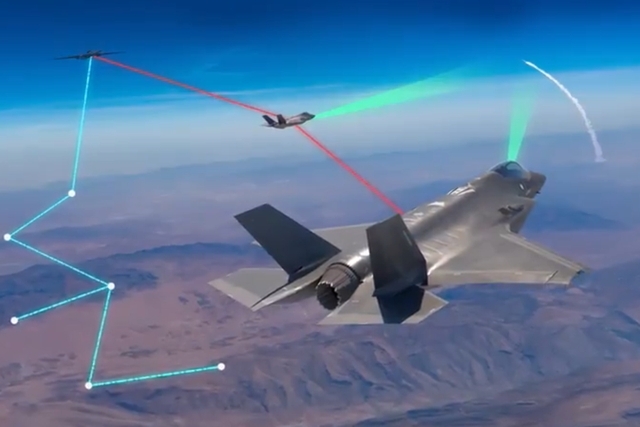USAF F-35 Jet Demos Joint All-Domain Operations Ability

The F-35 Jet demonstrated an ability for interoperability across the battlespace during a recent Orange Flag Evaluation (OFE) with the US Army and Air Force.
The exercise near Edwards Air Force Base, California, demonstrated the ability to integrate F-35 Intelligence, Surveillance, and Reconnaissance (ISR) track data with the US Army’s Integrated Air and Missile Defense Battle Command System (IBCS).
It expands on the previously confirmed capability for F-35 ISR data to track and take action on an identified threat, which has been proven across multiple military services and organizations to enable joint all-domain operations (JADO).
“F-35 integration provides the warfighter with expanded situational awareness and improved engagement timelines,” said Scott Arnold, vice president, Integrated Air and Missile Defense, Lockheed Martin Missiles and Fire Control. “This evaluation clearly demonstrates the value of utilizing data from F-35 to enable enhanced integrated air and missile defense.”
During the evaluation, US Air Force F-35s provided track data to Lockheed Martin’s Airborne Sensor Adaptation Kit (A-Kit) to interface with a surrogate IBCS. The A-Kit successfully processed all track data shared by the F-35 through the ground station linked with the F-35. F-35 data was also sent to a U-2 aircraft, Lockheed Martin posted on its website.
F-35 data collected from the U-2 airborne relay will serve to validate that a single IBCS Airborne Sensor A-Kit can serve multiple pathways to get data from F-35 and ISR assets.
“This exercise further validates the F-35’s ability to serve as an elevated airborne sensor, providing increased survivability and lethality within JADO,” said Greg Ulmer, Lockheed Martin F-35 Program vice president and general manager. “The F-35’s advanced sensors and connectivity enable it to gather, analyze and seamlessly share critical information, enabling greater joint force protection.”
F-35 ISR track data was used with IBCS for the first time during OFE 19-2 to enhance situational awareness and provide weapons-quality track data to engage airborne targets with virtual PAC-3. In December 2019, F-35s were used to provide track data to IBCS to successfully intercept near simultaneous air-breathing threats in a test at White Sands Missile Range, New Mexico.










